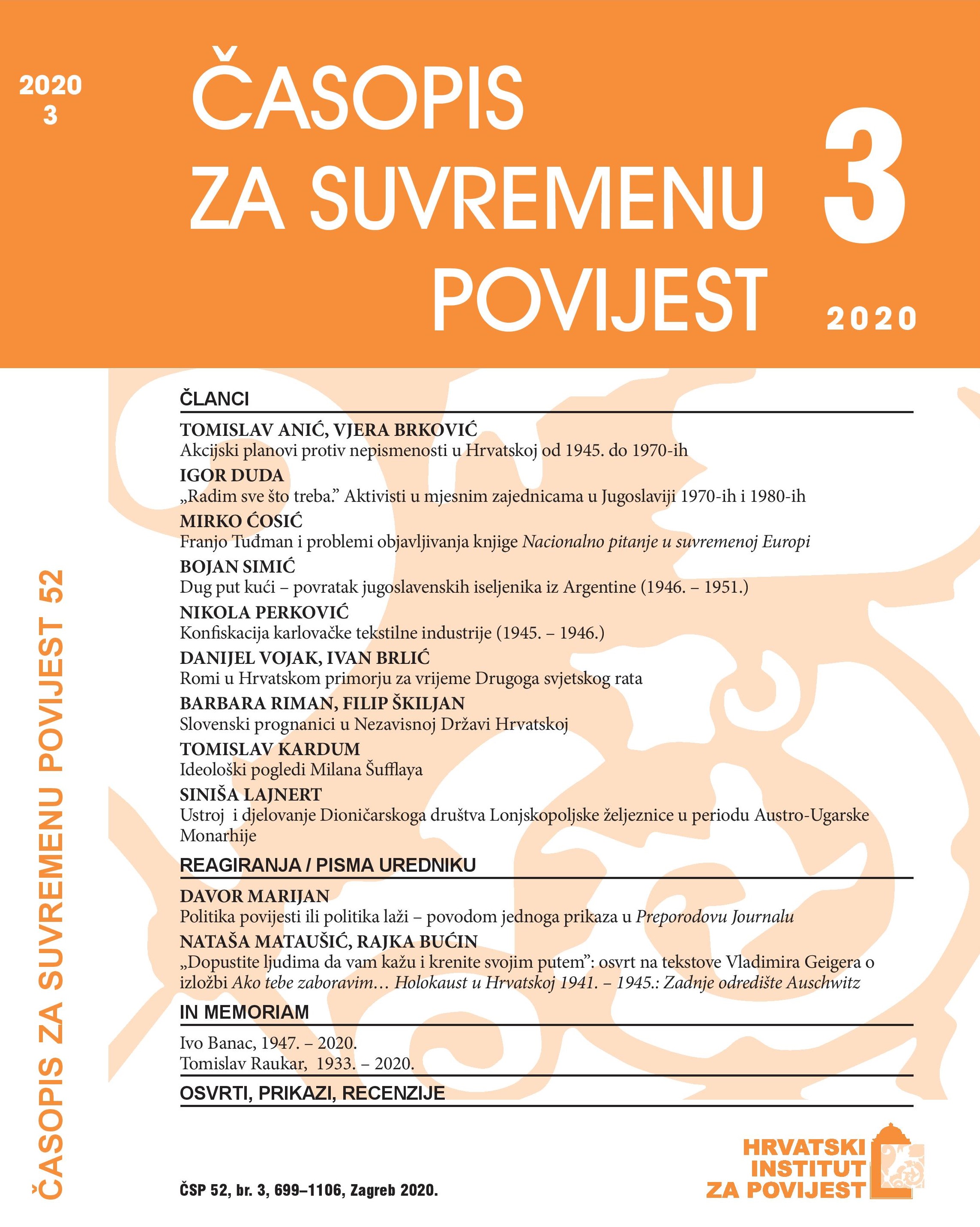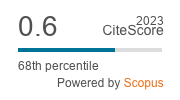A Long Way Home – The Return of Yugoslav Immigrants from Argentina (1946–1951)
DOI:
https://doi.org/10.22586/csp.v52i3.11167Keywords:
immigration; South America; FPR Yugoslavia; Republic of Argentina; repatriationAbstract
Diplomatic, consular and economic relations between the Federal People’s Republic of Yugoslavia and the Republic of Argentina were established on 16 September 1946. The agreement was signed by General Ljubo Ilić, chief of the Yugoslav diplomatic mission in South America, and Juan Atilion Bramuglia, Argentinian Minister of Foreign Affairs and Religion. In the first decade after World War II, the two states had some open problems and unresolved issues such as the question of commercial agreements, Yugoslav political emigration in Argentina, especially the Ustasha movement, Argentine nationalised property in Yugoslavia, visas for entering Argentina etc.
Following World War II, Argentina became the country with the most emigrants of Yugoslav origin in the entire Latin America. The major part of those were Croats and Slovenes, while emigrants from Montenegro and Serbia made up a smaller proportion. The issue of Yugoslav immigrants in Argentina was of the greatest importance in the relations between two countries. In the late 1940s, the interests of Yugoslavia and Argentina in this matter were opposed. Both sides wanted to use a qualified work force for building their own country. Yugoslavia tried to recruit immigrants to come back and take part in fulfilment of the Five-Year Plan established in 1947. Argentina on the other hand, wanted to keep able-bodied people for building its own industry. The Yugoslav government sent ships for immigrants and organised housing and jobs for them upon their return. The majority of them were construction, agriculture, and textile workers. The peak of the repatriation was 1948, when 83% of Yugoslav immigrants returned from Argentina.
There was another problem, and that was the different treatment of immigrants with dual citizenship, which especially referred to the children of Yugoslav immigrants who were born on Argentine soil. According the law, they were Argentine citizens, but Yugoslav authorities still thought of them as their own. According to official data, of all the people to return in Yugoslavia in the 1946–51 period, a total of 1,748 arrived from Argentina, which was 10.84% of the total number of returning Yugoslav citizens. Only France was ahead of Argentina in this period in terms of numbers of returns, with 3,914, while Canada was behind, with 1,727.
Downloads
Published
Versions
- 2020-12-02 (2)
- 2020-12-02 (1)
How to Cite
Issue
Section
License
Copyright (c) 2020 authors and journal

This work is licensed under a Creative Commons Attribution-NonCommercial 4.0 International License.
Copyright holders are the publisher Croatian Institute of History and the authors. Journal of Contemporary History is an Open Access journal. Users are allowed to read, download, copy, redistribute, print, search and link to material, and alter, transform, or build upon the material, or use them for any other lawful purpose as long as they attribute the source in an appropriate manner according to the Creative Commons licence CC BY-NC. The papers published in Journal of Contemporary History can be deposited and self-archived in the institutional and thematic repositories providing the link to the journal's web pages and HRČAK. Journal does not charge article processing charges (APC). The editors assume no responsibility for statements of fact or opinion made by contributors.




